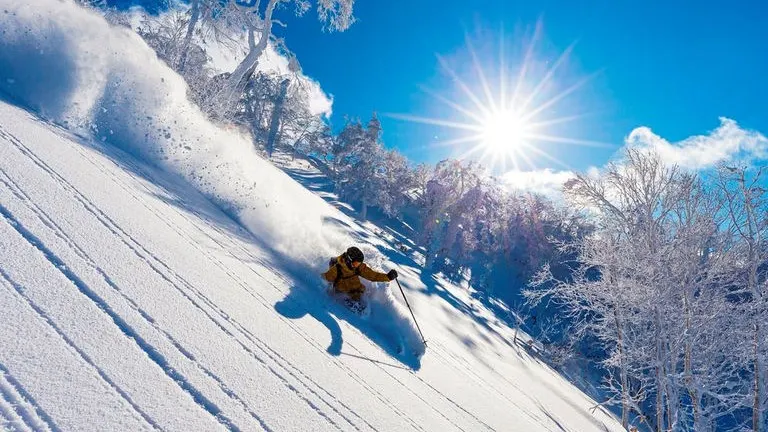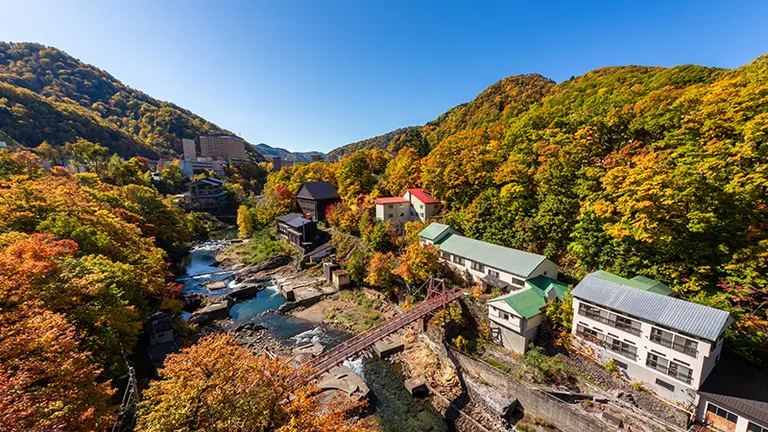
ARTICLES
Enjoy the nature and history of the marshland! Sarobetsu Marshland Backyard Tour Experience Report [Sarobetsu Marshland
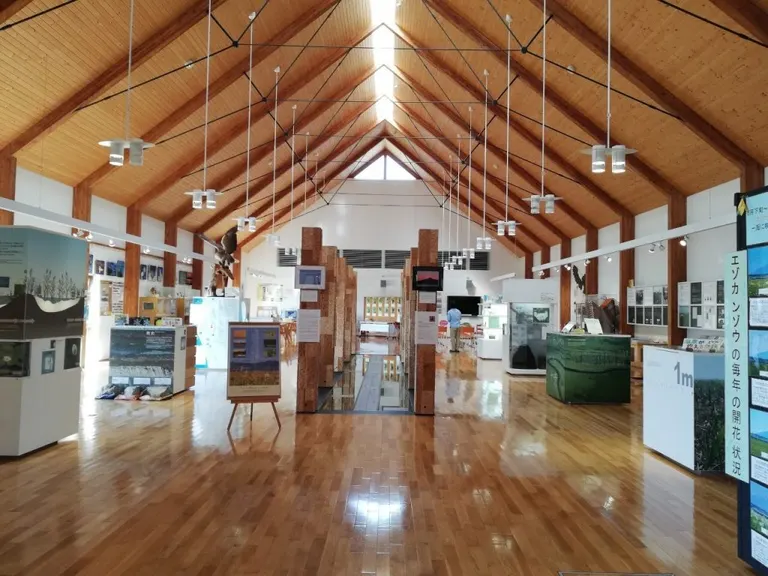 ( Sarobetsu Marshland Center, which has a wide range of exhibits )
( Sarobetsu Marshland Center, which has a wide range of exhibits )The tour begins!
Now, once you have tied your boots tightly, it is time to start the tour. First, we will enter the Peat Industry Museum next to the Marshland Center. Inside the dimly lit building is a collection of large machinery from the time when peat mining was done. The peat was excavated from the marsh and turned into peat moss, a soil conditioner, which was then sold.As we are escorted outside, we see a rusty red boat at the entrance of the marsh, its body lying heavily on the ground. This is a peat dredger, a boat used to excavate peat. The rough surface and the majestic appearance of the vessel make it look old-fashioned, but it was in use until the early 2000s. The railings and ladders that stretch across the hull create a sense of excitement.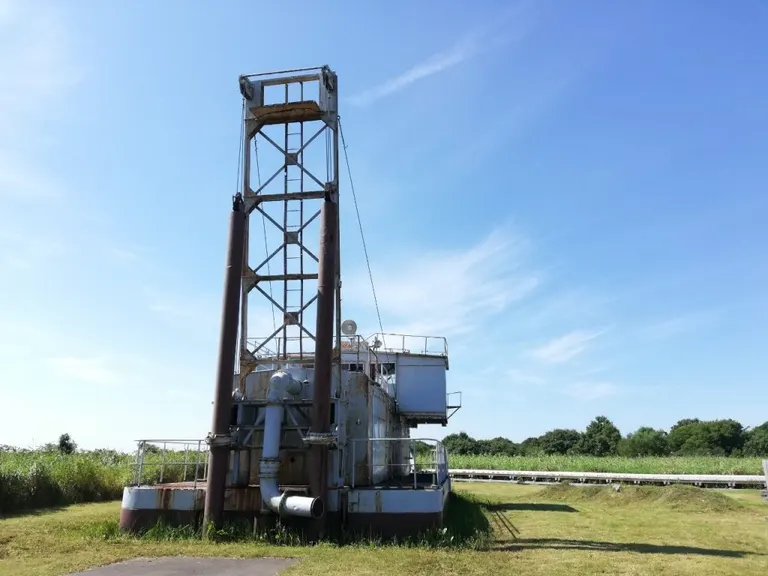 When you get closer, it's huge...
When you get closer, it's huge...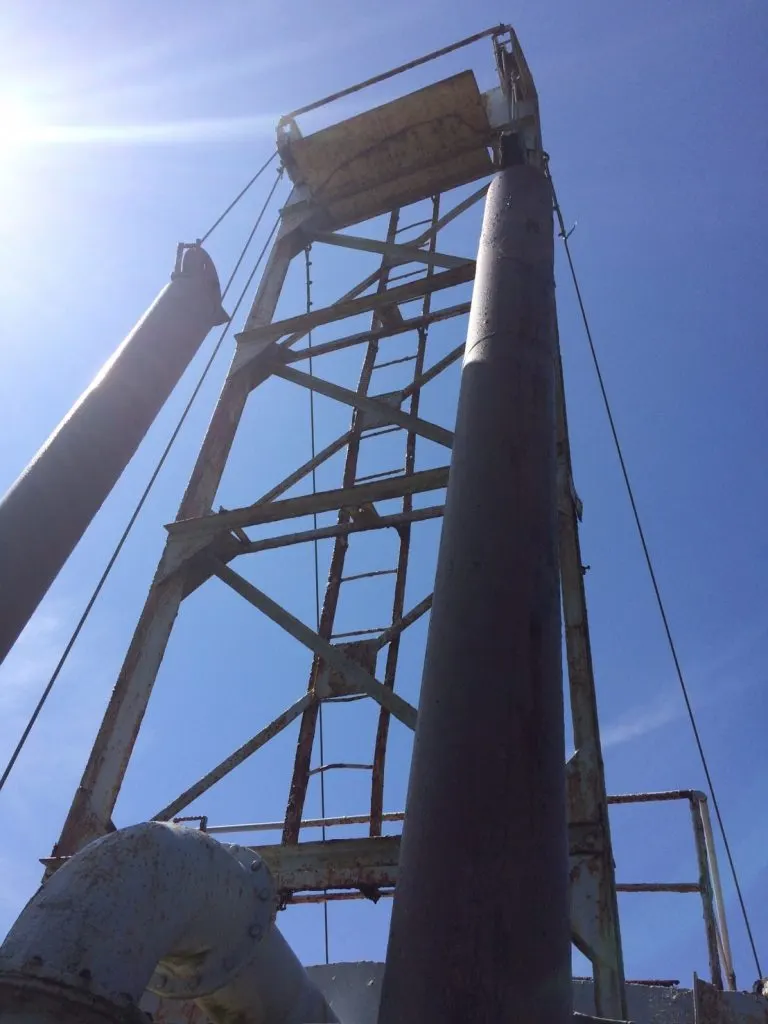 Passing by the side of the dredge, we entered the marsh. After walking along the wooden path for a while, it opens up before your eyes. The majestic field covers the entire area in the distance, swaying in the wind, and the deep blue sky makes the clouds flutter in the distance.
Passing by the side of the dredge, we entered the marsh. After walking along the wooden path for a while, it opens up before your eyes. The majestic field covers the entire area in the distance, swaying in the wind, and the deep blue sky makes the clouds flutter in the distance. The pale blue of Rishiri Fuji can be seen rising thinly on the horizon where the white clouds meet the waves of the grassy plains where the reeds rustle. The weather was particularly fine that day, and the mountain's ridges were clearly etched into the sky in the background.
The pale blue of Rishiri Fuji can be seen rising thinly on the horizon where the white clouds meet the waves of the grassy plains where the reeds rustle. The weather was particularly fine that day, and the mountain's ridges were clearly etched into the sky in the background.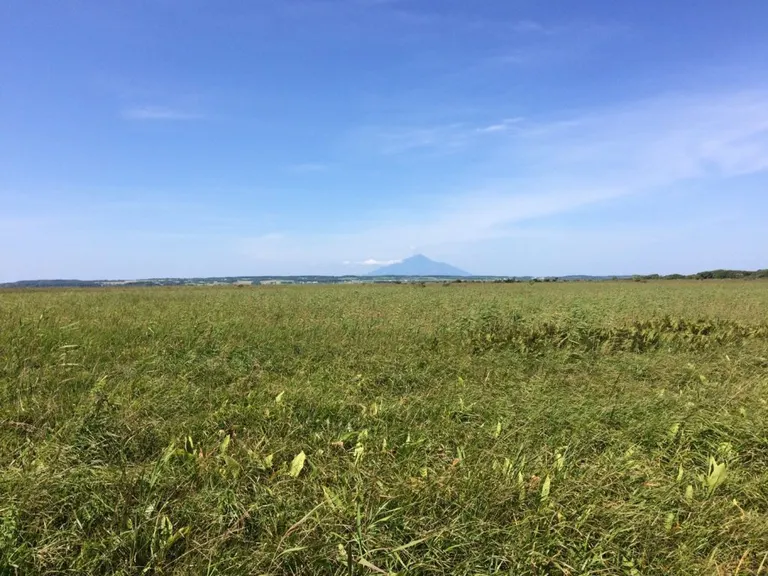 Here, what's that? Sarobetsu Field is not a marshland? Some of you may be thinking, "What is Sarobetsu Plain? Indeed, no matter how you look at the photo, it is a field. In fact, the central part of Sarobetsu Marshland is called "high-rise marshland," which looks completely different from "low-rise marshland" in Kushiro and other areas. High marshlands are formed when peat accumulates in the marshland and the ground surface rises due to the growth of mosses, etc., on top of which shorter marshland plants flourish. Thus, the surface appears to be grassland, although there is in fact an abundant reservoir of water beneath the ground.
Here, what's that? Sarobetsu Field is not a marshland? Some of you may be thinking, "What is Sarobetsu Plain? Indeed, no matter how you look at the photo, it is a field. In fact, the central part of Sarobetsu Marshland is called "high-rise marshland," which looks completely different from "low-rise marshland" in Kushiro and other areas. High marshlands are formed when peat accumulates in the marshland and the ground surface rises due to the growth of mosses, etc., on top of which shorter marshland plants flourish. Thus, the surface appears to be grassland, although there is in fact an abundant reservoir of water beneath the ground.Ecosystems unique to marshlands
As you walk along the forest paths, you will see the delicate and rich ecosystems that are unique to marshlands, such as the vine moss, the Japanese honeywort, and the insectivorous plant, the mousseline moss.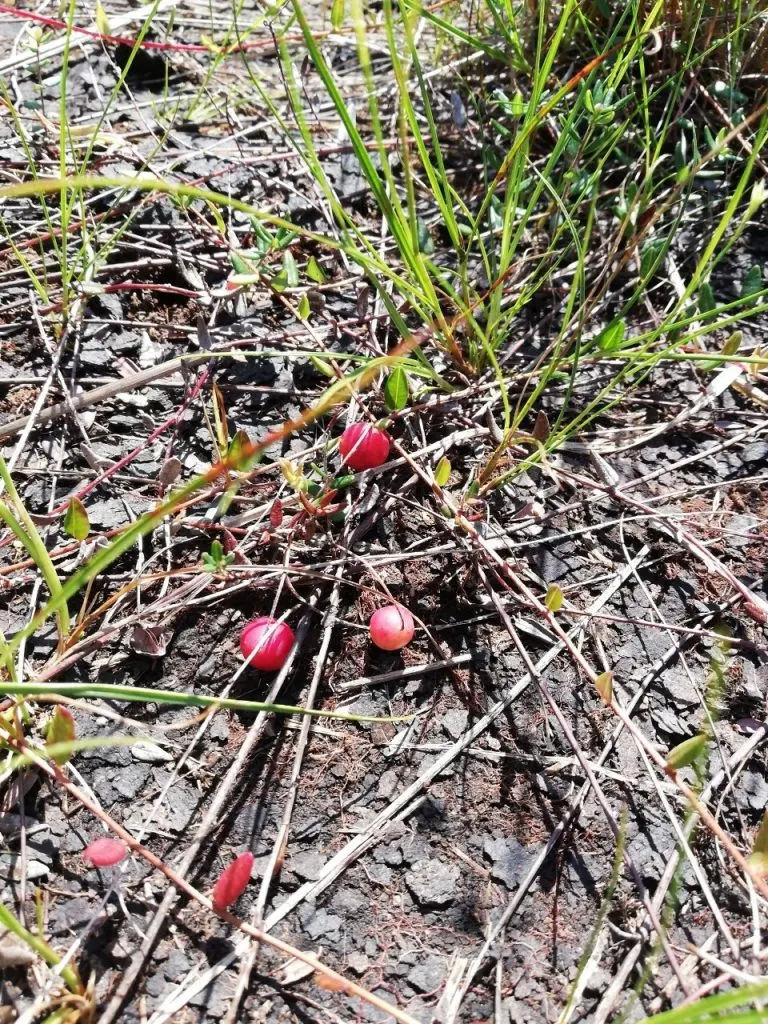 ( The red, round fruits of the cranberry are adorable. )
( The red, round fruits of the cranberry are adorable. ) 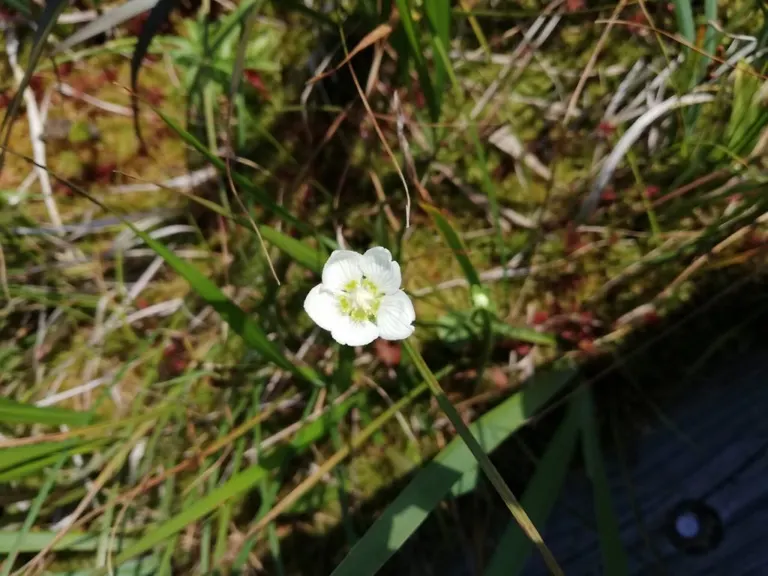 ( White flowers in a blue-green landscape. A white flower in a blue-green landscape.)
( White flowers in a blue-green landscape. A white flower in a blue-green landscape.) 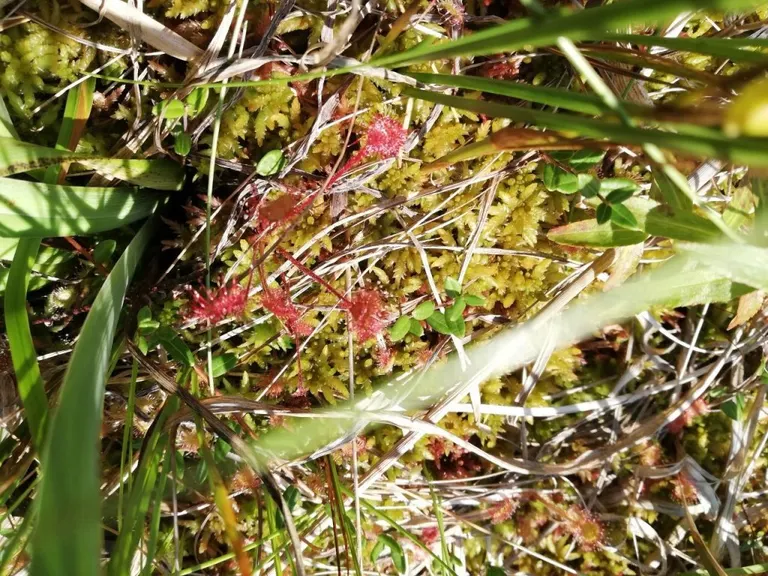 ( An insectivorous moss with an eerie yet charming appearance.)As the tour continues, a huge pond with reddish-black ripples appears. This is the site of the peat excavation by the dredger mentioned earlier. It is now used by waterfowl for resting.
( An insectivorous moss with an eerie yet charming appearance.)As the tour continues, a huge pond with reddish-black ripples appears. This is the site of the peat excavation by the dredger mentioned earlier. It is now used by waterfowl for resting.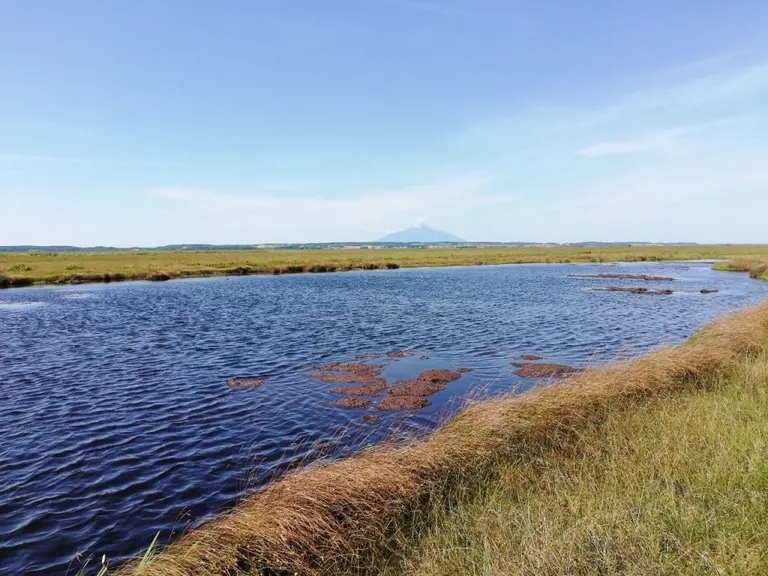 However, attempts are still being made to restore nature. At the climax of the tour, you will participate in an effort to restore nature.As we walk with our guide, we come to an area of bald ground with no vegetation at all along a wooden path. Here, for the first time that day (or rather, for the first time in our lives), we get special permission to step off the wooden path into the Sarobetsu wetlands. The land, which had been stripped bare by peat excavation, was fluffy when we stepped on it. When the guide jumped on the ground, ripples were transmitted to the surface of the surrounding soil. This mysterious phenomenon occurs because water is stored under the feet and gently covered by the soft peat. When we jumped up and down, the ground trembled and we felt as if we were on the cement before it hardened. It was a very strange sensation.
However, attempts are still being made to restore nature. At the climax of the tour, you will participate in an effort to restore nature.As we walk with our guide, we come to an area of bald ground with no vegetation at all along a wooden path. Here, for the first time that day (or rather, for the first time in our lives), we get special permission to step off the wooden path into the Sarobetsu wetlands. The land, which had been stripped bare by peat excavation, was fluffy when we stepped on it. When the guide jumped on the ground, ripples were transmitted to the surface of the surrounding soil. This mysterious phenomenon occurs because water is stored under the feet and gently covered by the soft peat. When we jumped up and down, the ground trembled and we felt as if we were on the cement before it hardened. It was a very strange sensation.Nature's rebirth over a long period of time
We followed the guide's instructions to help nature regenerate itself instead of just playing around. The ground is covered with biodegradable hemp netting (a special coarse cloth) to make it easier for newly flown plant seeds and ivy to become entangled in the exposed land where plants have been unable to grow roots. Next to us, small light green plant leaves were sprouting on the cloth that was installed several years ago. From now on, over a mind-boggling number of years, little by little, nature will be regenerated little by little.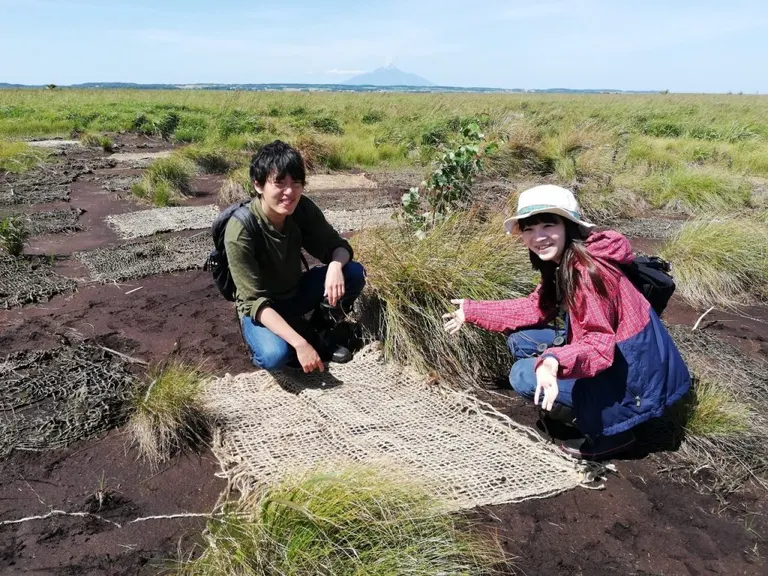 ( A hemp net is set up on the ground. Rishiri Fuji is watching over us from across the sea.)In this way, I was able to enjoy nature with all my senses and experience its richness, while at the same time experiencing firsthand the fragile and delicate nature of the marshlands and the scars that still remain. Why must we protect nature? I felt as if I was confronted by the beauty of nature with questions that I do not usually think about.
( A hemp net is set up on the ground. Rishiri Fuji is watching over us from across the sea.)In this way, I was able to enjoy nature with all my senses and experience its richness, while at the same time experiencing firsthand the fragile and delicate nature of the marshlands and the scars that still remain. Why must we protect nature? I felt as if I was confronted by the beauty of nature with questions that I do not usually think about.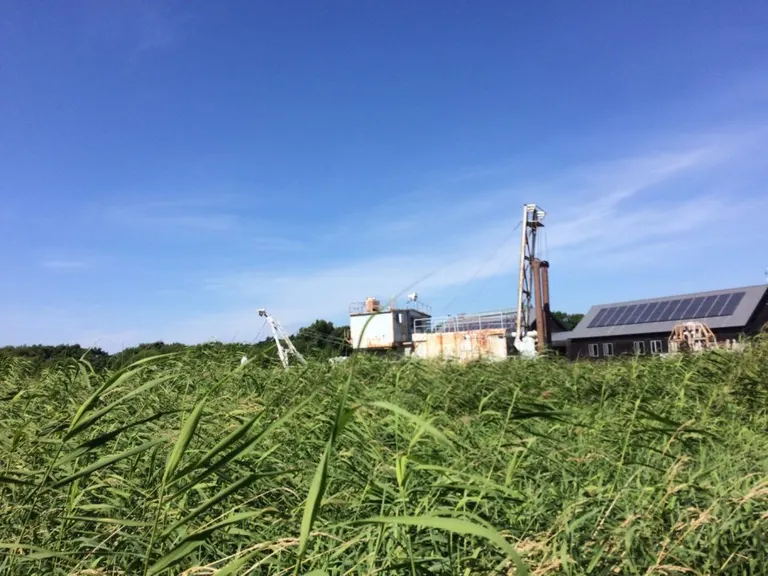 The Sarobetsu Marsh Backyard Tour ended with great satisfaction. The beauty of the Sarobetsu wilderness, which is usually off-limits to visitors, is still fresh in my mind's eye. The guide's interesting explanations and enthusiastic answers to our questions gave us a glimpse of his sincere attitude toward the marshland's nature. I felt a bit sorry that such a wonderful tour was free of charge. Why don't you step into the northern wilderness?Finally, after the tour, you can enjoy a bowl of "Sarobetsu Ramen" at Rest House Sarobetsu. The rich flavor of local seafood from Wakkanai soaked into my tired body.
The Sarobetsu Marsh Backyard Tour ended with great satisfaction. The beauty of the Sarobetsu wilderness, which is usually off-limits to visitors, is still fresh in my mind's eye. The guide's interesting explanations and enthusiastic answers to our questions gave us a glimpse of his sincere attitude toward the marshland's nature. I felt a bit sorry that such a wonderful tour was free of charge. Why don't you step into the northern wilderness?Finally, after the tour, you can enjoy a bowl of "Sarobetsu Ramen" at Rest House Sarobetsu. The rich flavor of local seafood from Wakkanai soaked into my tired body. (Sarobetsu Ramen (milk flavor) 1,000 yen. (Sarobetsu Ramen (milk flavor) 1,000 yen, with a choice of hokki-gai or scallop. With thick butter.)
(Sarobetsu Ramen (milk flavor) 1,000 yen. (Sarobetsu Ramen (milk flavor) 1,000 yen, with a choice of hokki-gai or scallop. With thick butter.)







